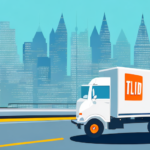Understanding FedEx's Logistics Operations
FedEx is a global leader in courier and logistics services, dedicated to providing efficient and reliable delivery solutions to millions of customers worldwide. With a comprehensive logistics network, FedEx ensures that packages reach their destinations promptly, maintaining high standards of service across diverse markets. This article delves into the intricacies of FedEx's operations, delivery schedules, challenges, technological advancements, and future innovations.
FedEx's Operations and Delivery Schedules
FedEx operates through a sophisticated network of over 670 aircraft and more than 180,000 vehicles, including trucks and vans, facilitating global deliveries. This extensive fleet allows FedEx to offer various services tailored to different customer needs, such as FedEx Ground, Home Delivery, Express, and Freight. Each service has specific delivery schedules influenced by local factors and seasonal demands.
Moreover, FedEx provides value-added services like packaging, printing, customs brokerage, and trade solutions, enhancing the overall shipping experience for customers. Online tools enable users to track packages, manage shipments, and access essential shipping information, reinforcing FedEx's commitment to comprehensive logistics solutions.
Determining the End of the Delivery Day
The end of a delivery day for FedEx varies based on the service type and operational requirements. For instance:
- FedEx Express: The end of the day is determined by the number of packages a driver can deliver within scheduled hours.
- FedEx Ground: Operations typically conclude at the end of regular delivery hours, usually between 9 am to 8 pm, depending on the region.
During peak periods, such as the holiday season, FedEx extends its delivery hours to accommodate increased package volumes. Additionally, extreme weather conditions like snowstorms or hurricanes can lead to suspension or extension of delivery services to ensure the safety of both drivers and customers.
FedEx also offers flexible delivery options, including same-day, next-day, and two-day deliveries, each with varying delivery windows to meet customer preferences.
The Importance of Timely Deliveries
Timely deliveries are paramount to FedEx's success, underpinning customer trust and satisfaction. For businesses that rely on FedEx for operations, punctual deliveries ensure continuity and efficiency. According to a study by Deloitte, 80% of customers consider reliable delivery times as a critical factor in choosing a logistics provider.
Consistently on-time deliveries enhance customer experience, fostering loyalty and encouraging repeat business. Positive delivery experiences also drive word-of-mouth referrals, further expanding FedEx's customer base.
Challenges in Meeting Delivery Deadlines
Operating in the complex logistics industry, FedEx faces several challenges in maintaining timely deliveries:
- Traffic Congestion: Urban areas often experience heavy traffic, delaying delivery schedules.
- Peak Season Saturation: High volumes during holidays can strain resources.
- Weather Fluctuations: Adverse weather conditions disrupt delivery operations.
- Competitive Pressures: Intense competition necessitates continuous improvement in service delivery.
To mitigate these challenges, FedEx employs advanced technologies, including route optimization software and real-time package tracking systems. Automated sorting centers and contingency planning further enhance FedEx's ability to adhere to delivery schedules despite unforeseen disruptions.
The Role of Technology in Operations
Technology is integral to FedEx's ability to maintain efficient logistics operations. Key technological initiatives include:
- SenseAware: This system provides real-time data on package conditions, including temperature and moisture levels, ensuring sensitive shipments are handled appropriately.
- FedEx Delivery Manager: An intelligent software platform that allows customers to customize delivery preferences and schedules.
- Autonomous Vehicles: FedEx is exploring self-driving trucks and drones to enhance delivery speed and reduce operational costs.
- Data Analytics and AI: Leveraging data-driven insights to optimize delivery routes, predict delays, and improve overall efficiency.
These technological advancements enable FedEx to streamline operations, reduce errors, and provide superior service to customers.
Impact of Weather and Natural Disasters
Weather events and natural disasters significantly affect FedEx's delivery schedules. Severe conditions such as hurricanes, snowstorms, and floods can lead to service suspensions and delays. To combat these disruptions, FedEx implements robust contingency plans, including:
- Rerouting packages to unaffected areas
- Providing temporary storage solutions
- Deploying additional resources to handle backlog
By closely monitoring weather forecasts and collaborating with local authorities, FedEx ensures minimal impact on delivery timelines while safeguarding employee and customer safety.
Strategies to Meet Customer Expectations
FedEx employs multiple strategies to exceed customer expectations, including:
- Technological Innovation: Continual investment in cutting-edge technologies to enhance delivery efficiency.
- Flexible Delivery Options: Offering various delivery speeds and customizable preferences to cater to diverse customer needs.
- Employee Training: Comprehensive training programs to improve service quality and customer interaction.
- Sustainability Initiatives: Implementing eco-friendly practices such as using alternative fuels and optimizing routes to reduce carbon emissions.
These strategies not only improve operational efficiency but also align with customer values, particularly the growing emphasis on sustainability.
Impact of COVID-19 on Logistics and Operations
The COVID-19 pandemic has reshaped the logistics landscape, presenting both challenges and opportunities for FedEx:
- Increased Demand: A surge in e-commerce led to higher package volumes, necessitating the expansion of delivery capacities.
- Operational Adjustments: Implementation of contactless deliveries, enhanced sanitation protocols, and safety measures for employees.
- Supply Chain Disruptions: Reduced air transport capacity due to flight restrictions impacted delivery times.
In response, FedEx accelerated its adoption of automation and digital tools to optimize routes and improve tracking capabilities. Collaborations with e-commerce platforms enabled FedEx to offer more flexible and reliable delivery options, ensuring continued service despite the pandemic's challenges.
Future Innovations for Delivery Efficiency
Looking ahead, FedEx is committed to advancing its delivery infrastructure through innovation:
- Autonomous Delivery: Expanding the use of drones and self-driving vehicles to enhance delivery speed and reduce costs.
- Blockchain Technology: Utilizing blockchain for secure and transparent supply chain management, improving cargo tracking and reducing delivery times.
- Electrification of Fleet: Transitioning to electric delivery vehicles to minimize environmental impact and align with sustainability goals.
- Advanced Data Analytics: Leveraging artificial intelligence and machine learning to predict demand patterns and optimize resource allocation.
These initiatives position FedEx to remain at the forefront of the logistics industry, ensuring efficient and sustainable delivery services in the future.
Conclusion
FedEx's ability to determine the end of the delivery day is a testament to its robust logistics framework and commitment to operational excellence. By leveraging advanced technologies, implementing strategic solutions, and continuously adapting to industry challenges, FedEx maintains its reputation as a reliable and efficient global logistics provider. Understanding these dynamics provides valuable insights for businesses and individuals relying on FedEx's services, highlighting the company's dedication to meeting and exceeding delivery expectations.




















